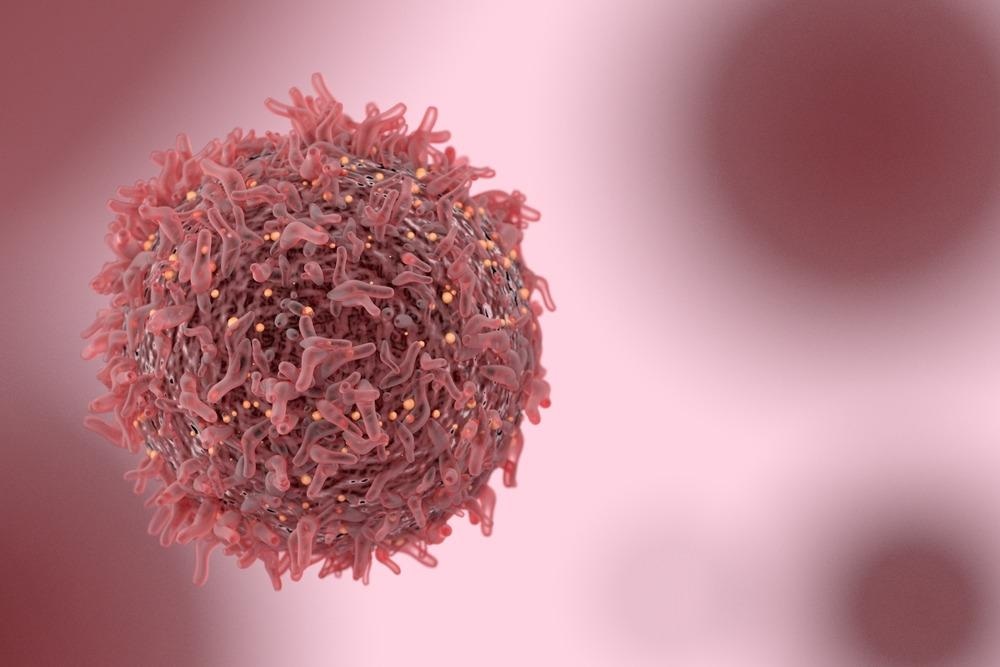A paper available as a pre-proof in the journal Materials Today Communications has reviewed different synthesis methods of graphene quantum dots (GQDs) as well as their optical properties and applications against cancer.

Study: Graphene quantum dots: synthesis, optical properties and navigational applications against cancer. Image Credit: CI Photos/Shutterstock.com
Significance of Graphene Quantum Dots
GQDs are referred to as zero-dimensional carbon-based nanomaterials that have gained wide attention for theranostic applications owing to their chemical inertness, high hydrophilicity, non-toxicity, and ultra-small size. Additionally, GQDs offer high luminescence stability, imaging depth, and signal-to-noise ratio, and their optoelectronic properties can be modulated for edge group functionalization and heteroatom doping.
GQD Synthesis Methods
Bottom-up and top-down methods are the two main approaches used for the synthesis of GQDs. The selection of a specific synthesis method depends on the process yield, production scale, and product properties.
Top-Down Approaches
The top-down synthesis approach involves the exfoliation of carbon materials such as graphite into single- or multi-layered graphene sheets and then breaking up the sheets in both dimensions through microwave, electrochemical scissoring, solvothermal, and oxidation treatments to obtain GQDs with intended particle properties. The π-conjugation in the synthesized GQDs is restored through an in situ re-aromatization process.
Oxidation Treatment
In oxidation treatment, the breakup of carbon-carbon (C-C) bonds in carbon materials is achieved using strong oxidizing agents such as sulfuric acid (H2SO4) under aggressive experimental conditions. The method exploits the multiplicity of structural defects that are formed at the basal plane of the graphene sheets during exfoliation.
Solvothermal Treatment
Solvothermal treatment primarily involves solvent-assisted breakup of carbon materials under high pressure and temperature. For biomedical applications, water is used as the green dispersion medium, and the process is referred to as hydrothermal treatment.
In hydrothermal treatment, pre-oxidized graphene sheets are exposed to overheated steam under pressure, which restores the carbon lattice aromatic structures by minimizing the defects in surface oxygen.
Electrochemical Scissoring
In electrochemical scissoring, GQDs are obtained by cleaving the graphite electrode under high redox voltage in a normal electrochemical set-up. The electrodes typically used in this method include carbon paste electrodes synthesized by packing method and petroleum coke–based electrodes made by calcination.
Microwave Irradiation Treatment
The method is an attractive option for GQD synthesis owing to its uniform dielectric heating ability. A microwave with an atmospheric reflux device is employed to perform the method at an ultra-fast speed without adversely impacting the product characteristics and yield.
Bottom-up Approaches
Thermodynamically driven GQD preparation processes are considered more suitable than the defect-mediated fragmentation of graphene sheets. The bottom-up QD fabrication approach can address the limitations of top-down strategy and help in obtaining GQDs with specific structures and morphology through chemical reactions.
The approach employs eco-friendly and low-cost small organic molecules such as glucose for the GQD synthesis that is performed through the step-wise reduction of pre-synthesized polycyclic aromatic hydrocarbons or condensation of solubilized precursors.
Carbonization
Carbonization can be performed through hydrothermal treatment, microwave exposure, and pyrolysis under reduced pressure. GQDs were successfully synthesized through the pyrolysis of synthetic and natural molecules.
Cage-Opening
In this method, fullerenes, which are mainly zero-dimensional caged structures composed of 70 (C70), 60 (C60), or more carbon atoms, are packed into fused pentagons and hexagons to synthesize a diverse range of graphene materials. Although the materials remain stable at room temperature, they undergo fragmentation due to annealing at temperatures above 700 °C.
Green Synthesis Methods
In green synthesis, the input materials are obtained from organic materials such as vegetable wastes, which renders the method less hazardous to the environment and cost-effective.
The graphene sheets are synthesized following bottom-up approaches and then the synthesized sheets are fragmented to GQDs using top-down approaches.
Optical Properties of GQDs
In GQDs, the optical transition can cover the near-infrared (NIR) and ultraviolet (UV)-Visible regions of the solar spectrum, and their absorption spectrum displays a weak and a strong peak due to n–π* and π–π* transitions, respectively. The photoluminescence (PL) varies based on the de-localized π electron density at the surface defects and basal plane.
Additionally, the optical properties of GQDs can be improved by doping them with heteroatoms such as sulfur and nitrogen.
An advanced photothermal-photodynamic platform developed by combining the singlet oxygen generation ability of porphyrin derivatives and optical properties of GQDs can translocate to cytosolic targets in presence of targeting moieties, leading to improved therapeutic outcomes.
Applications of GQDs Against Cancer
GQDs are used in several applications against cancer, ranging from the identification of biomolecular changes in cells to tumorigenesis and tissue imaging. The detection of abnormally dividing cells in a pre-invasive state can potentially improve the survival rate of cancer patients. Multimodal imaging platforms can be developed by combining metal nanoparticles with GQDs.
Targeted imaging of tumor mass is necessary for timely diagnosis of the condition. GQDs employed in conjunction with magnetic resonance imaging (MRI) can provide a high spatial resolution of the target tumor mass. Additionally, cancer-specific biomarkers can be detected rapidly in a cost-efficient manner using GQDs as electro-chemiluminescence (ECL) or chemiluminescence (CL) reagent. Moreover, studies demonstrated that GQDs rapidly excrete from the host body after they were administered through subcutaneous, intramuscular, or intravenous injections.
Overall, this study reviewed different GQD synthesis methods, optical properties, as well as applications in the context of cancer diagnosis. However, more research is required to further assess the GQD synthesis methods in terms of consistency and throughput.
Reference
Tiwari, S., Bahadur, P., Shukla, R. et al.(2022) Graphene quantum dots: synthesis, optical properties and navigational applications against cancer. Materials Today Communications. https://www.sciencedirect.com/science/article/pii/S2352492822002306?via%3Dihub
Disclaimer: The views expressed here are those of the author expressed in their private capacity and do not necessarily represent the views of AZoM.com Limited T/A AZoNetwork the owner and operator of this website. This disclaimer forms part of the Terms and conditions of use of this website.